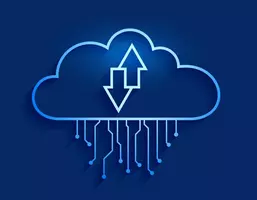Project Outline/Description
L&M Farm is an IoT based Smart Farm Based On Lora & Mqtt that leverages the advantages of LoRa and MQTT technologies for monitoring and managing farm activities. This project is aimed at providing better efficiency, cost savings and improved crop yield for farmers.
The project involves the installation of LoRa enabled sensors in the farm that collect soil moisture, temperature and light level data. The collected data is then transmitted over the LoRa network to a central server which processes the data and sends it over the MQTT protocol to the farmer’s smartphone. The farmer can then analyze the data and take appropriate actions such as watering, fertilizing or changing the crop type.
The project also involves the development of a web application that provides farmers with an easy to use interface for tracking and managing their farm activities. This application will allow farmers to monitor their crops and make adjustments to their farming practices to improve crop yield and reduce costs.
Finally, the project involves the development of an analytics system that will allow farmers to compare their farm’s performance with other farms and identify areas of improvement. This will enable them to make more informed decisions and maximize their profits.
By implementing this project, farmers will be able to improve their efficiency and reduce costs while optimizing.
Hardware and software requirements for project implementation:
Hardware Requirements:
- Raspberry Pi: A microprocessor such as raspberry pi is required to receive data from the sensors and process them
- LoRa Module: This will serve as the primary communication protocol for the smart farm. It will provide long-range, low-power wireless communication between all the nodes in the network.
- MQTT Broker: This will serve as the central hub for the smart farm, allowing all the connected devices to communicate with each other.
- Sensor Devices: These will be used to collect data from the environment, such as temperature, humidity, and soil moisture.
- DHT11 sensor: It is used to check the temperature and humidity of the soya bean field.
- Soil-moisture sensor: This will check the current status of the moisture in the soil which can be connected to analogy pin or digital pin.
- Actuators: These will be used to control and automate processes, such as irrigation and light control.
- Network Interface: This will be used to connect the LoRa network to the internet, allowing remote control and monitoring of the farm.
- Power Supply: Utilized to supply electric power to an electrical load.
- Data Storage: This will be used to store the collected data, allowing for analysis and alerting.
- Control Software: This will be used to create automated control systems and processes, allowing for greater efficiency and productivity.
- Thingspeak: To check the current status of the sensors data uploaded to cloud, thingspeak dashboard is used to monitor it.
Software Requirements:
- Operating System: Any operating system suitable for running the required software, such as raspbian OS, Windows, Linux, or Mac OS.
- Programming Language: A programming language such as Python is needed to program the Raspberry pi/ Embedded C for arduino
- MQTT Broker: An MQTT broker is needed to facilitate communication between the farm’s devices and other connected systems. Examples include Mosquitto, HiveMQ, and VerneMQ.
- Thingspeak: A database is needed to store the data collected from the farm’s devices. (through sensors) and upload it to cloud. Examples include Thingspeak dashboard
- LoRaWAN Stack: A LoRaWAN stack is needed to facilitate communication between the farm’s devices and the LoRa network. Examples include The Things Network, Loriot, and Senet.
- Network Server: A network server is needed to manage the LoRa network, such as The Things Network or Loriot.
- Farm Management Software: A farm management software is needed to manage the farm’s sensors and devices, such as FarmOS or FarmBeats.
What You Will Learn? By working on the project
- Understanding of the LoRa technology and its use in the context of a smart farm.
- Designing and building the LoRa network and devices to be used in the farm.
- Understanding of the MQTT protocol and its usage in the context of the smart farm.
- Building the MQTT broker and client applications to connect to the LoRa devices in the farm.
- Programming the LoRa devices to send and receive data from the MQTT broker.
- Integrating the MQTT broker and client applications with an existing farm management system.
- Using the gathered data from the LoRa devices to optimize resource utilization and increase farm productivity.




